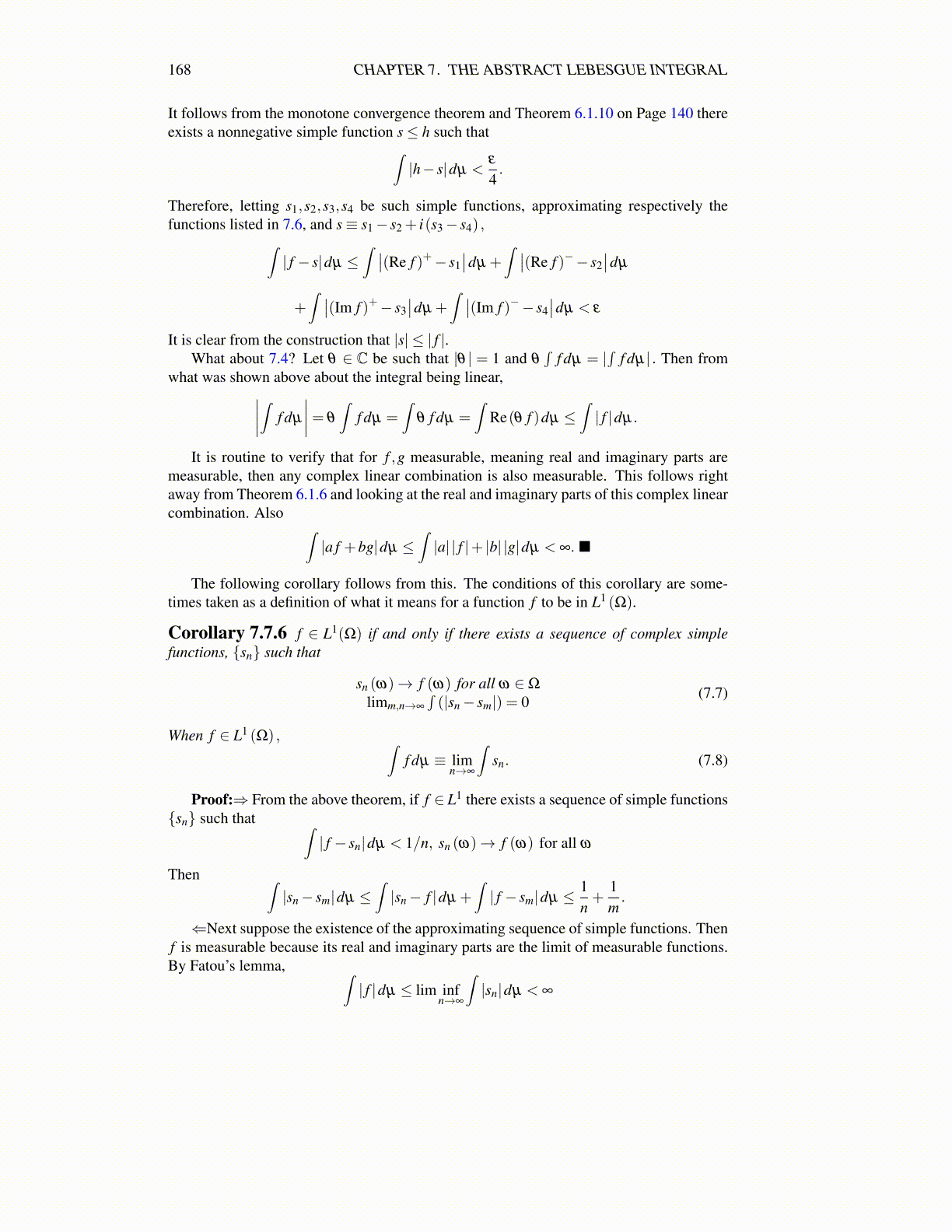
168 CHAPTER 7. THE ABSTRACT LEBESGUE INTEGRAL
It follows from the monotone convergence theorem and Theorem 6.1.10 on Page 140 thereexists a nonnegative simple function s≤ h such that∫
|h− s|dµ <ε
4.
Therefore, letting s1,s2,s3,s4 be such simple functions, approximating respectively thefunctions listed in 7.6, and s≡ s1− s2 + i(s3− s4) ,∫
| f − s|dµ ≤∫ ∣∣(Re f )+− s1
∣∣dµ +∫ ∣∣(Re f )−− s2
∣∣dµ
+∫ ∣∣(Im f )+− s3
∣∣dµ +∫ ∣∣(Im f )−− s4
∣∣dµ < ε
It is clear from the construction that |s| ≤ | f |.What about 7.4? Let θ ∈ C be such that |θ | = 1 and θ
∫f dµ = |
∫f dµ| . Then from
what was shown above about the integral being linear,∣∣∣∣∫ f dµ
∣∣∣∣= θ
∫f dµ =
∫θ f dµ =
∫Re(θ f )dµ ≤
∫| f |dµ.
It is routine to verify that for f ,g measurable, meaning real and imaginary parts aremeasurable, then any complex linear combination is also measurable. This follows rightaway from Theorem 6.1.6 and looking at the real and imaginary parts of this complex linearcombination. Also ∫
|a f +bg|dµ ≤∫|a| | f |+ |b| |g|dµ < ∞. ■
The following corollary follows from this. The conditions of this corollary are some-times taken as a definition of what it means for a function f to be in L1 (Ω).
Corollary 7.7.6 f ∈ L1(Ω) if and only if there exists a sequence of complex simplefunctions, {sn} such that
sn (ω)→ f (ω) for all ω ∈Ω
limm,n→∞
∫(|sn− sm|) = 0 (7.7)
When f ∈ L1 (Ω) , ∫f dµ ≡ lim
n→∞
∫sn. (7.8)
Proof:⇒ From the above theorem, if f ∈ L1 there exists a sequence of simple functions{sn} such that ∫
| f − sn|dµ < 1/n, sn (ω)→ f (ω) for all ω
Then ∫|sn− sm|dµ ≤
∫|sn− f |dµ +
∫| f − sm|dµ ≤ 1
n+
1m.
⇐Next suppose the existence of the approximating sequence of simple functions. Thenf is measurable because its real and imaginary parts are the limit of measurable functions.By Fatou’s lemma, ∫
| f |dµ ≤ lim infn→∞
∫|sn|dµ < ∞